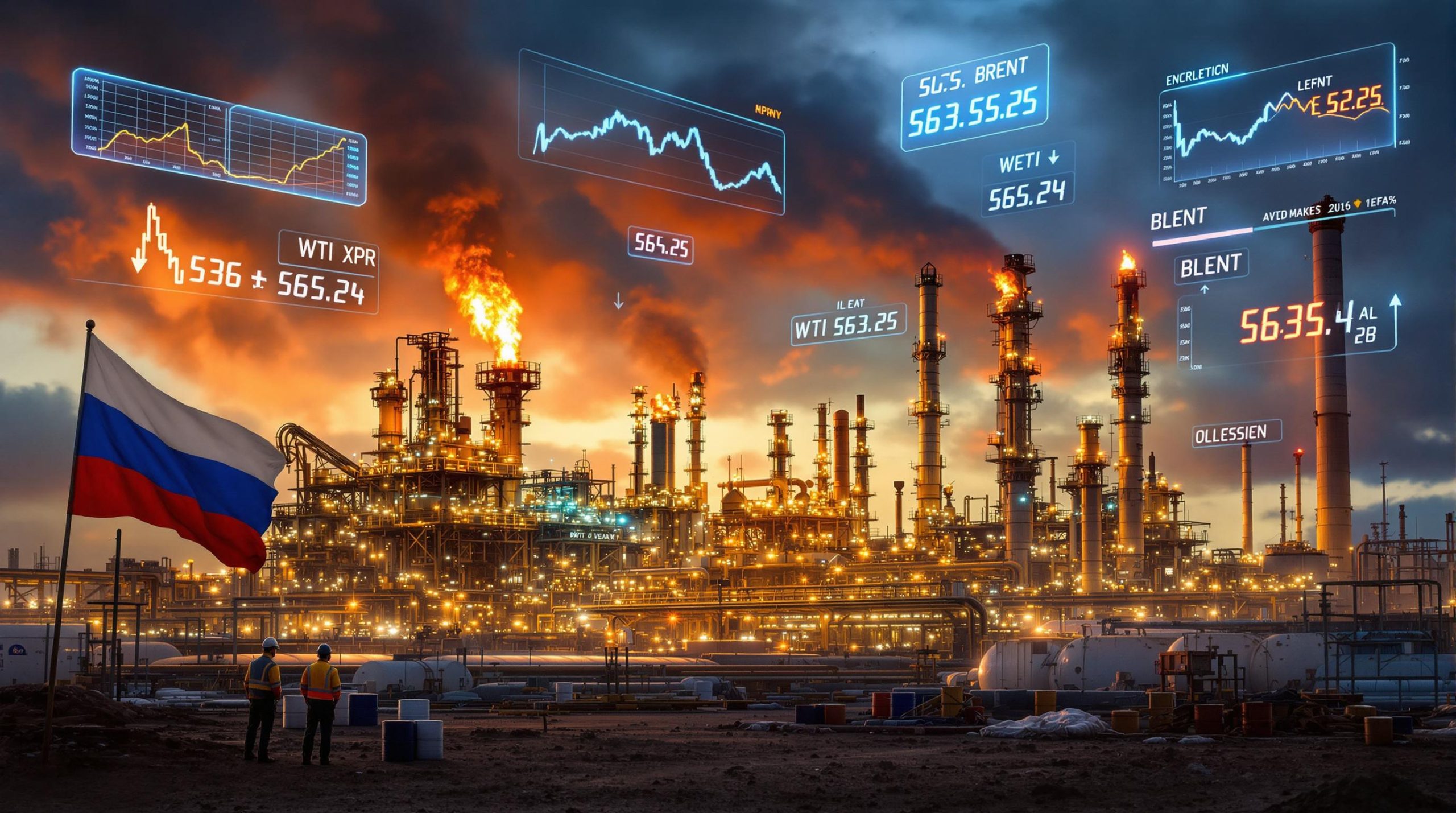Why Are These Oil Market Myths So Persistent?
The oil market is complex and often misunderstood, with several persistent myths continuing to shape public perception despite contradicting data. Understanding the reality behind these misconceptions is crucial for investors, policymakers, and consumers alike.
Is the U.S. Truly Energy Independent?
The Myth vs. Reality of American Energy Independence
Energy independence has been a popular political slogan for decades, particularly during presidential campaigns. While the United States has made significant strides in energy production, the reality is more nuanced than complete independence.
America became a net petroleum exporter in 2020—a historic milestone and the first time since 1949—but this doesn't tell the complete story. The U.S. still imports over 8 million barrels per day (bpd) of petroleum products, including approximately 6.48 million bpd of crude oil specifically. This represented about 76% of total gross petroleum imports in 2023.
The Import-Export Balance
The U.S. remains a net importer of crude oil despite being a net exporter of total petroleum products. This distinction is crucial:
- Imports: In 2023, Canada supplied 52% of U.S. petroleum imports, followed by Mexico (11%) and Saudi Arabia (5%)
- Exports: The U.S. exported about 10.15 million bpd of petroleum products to 173 countries in 2023
- Net position: Overall net petroleum exports were approximately 1.64 million bpd in 2023
This represents a dramatic shift from 2005, when U.S. petroleum imports peaked before beginning their steady decline.
Why Imports Remain Necessary
U.S. refineries are specifically designed to process heavier crude varieties than what domestic production typically yields. American shale oil is predominantly light crude, while many U.S. refineries—particularly those along the Gulf Coast—are optimized for heavier grades from Canada and elsewhere.
"Despite record U.S. crude oil production, U.S. refineries need heavier crudes than the light crudes from shale basins." — Tsvetana Paraskova, Oilprice.com
This technical mismatch necessitates continued imports despite record domestic production levels. The refinery configurations represent billions in infrastructure investment that cannot be quickly or inexpensively modified to process different crude varieties. Recent changes to Alaska drilling policy might impact this balance in the future, but current import needs remain significant.
Who Really Controls Oil Prices?
The Myth of OPEC's Total Control
Many believe OPEC single-handedly determines global oil prices, a misconception dating back to the 1973 oil embargo. While OPEC does influence the market through production quotas, it's just one factor in a complex pricing ecosystem. In reality, OPEC controls only about 35% of global oil production, limiting its ability to dictate prices unilaterally.
The Supply-Demand Reality
Oil prices result from multiple interacting factors:
- Supply factors: OPEC+ production decisions, U.S. shale output, global production capacity
- Demand drivers: Global economic growth, seasonal patterns, transportation trends
- Geopolitical events: Regional conflicts, sanctions, trade disputes
- Market speculation: Futures trading, investment flows, market sentiment
Recent examples demonstrate this complexity. In 2022, Russia's invasion of Ukraine sent prices above $100 per barrel despite OPEC's steady production. Similarly, in early 2024, concerns about global economic slowdowns following tariff announcements triggered oil price easing despite no immediate change in OPEC policy.
Market Reactions to Recent Events
The brief Israel-Iran conflict in 2024 temporarily pushed prices higher due to concerns about potential disruptions in the Strait of Hormuz—the world's most critical oil shipping lane through which approximately 35% of all seaborne oil passes. After the 12-day war ended in a ceasefire, prices quickly returned to pre-conflict levels, demonstrating how quickly geopolitical risk premiums can dissipate.
"OPEC often reacts to demand events by reducing supply, but it cannot directly influence demand." — Tsvetana Paraskova, Oilprice.com
This reveals a critical limitation in OPEC's market power—the organization can adjust supply but has no direct control over global demand patterns, which often drive price volatility. The ongoing oil price trade war dynamics further illustrate these limitations.
Can Presidents Control Gasoline Prices?
The Presidential Influence Myth
A persistent belief holds that U.S. presidents directly control gasoline prices. This myth resurfaces during every administration, with presidents typically taking credit for price decreases while blaming external factors for increases.
What Actually Determines Pump Prices
Gasoline prices depend on multiple factors beyond presidential control:
- Crude oil costs: The primary component, representing over 52% of retail gasoline prices
- Taxes: Federal and state taxes account for approximately 14.4% of the price
- Distribution and marketing: These costs contribute about 14.3%
- Refining costs and profits: Approximately 18.7% of the final price
This breakdown, provided by the Energy Information Administration (EIA), shows why presidential influence is limited—more than half the price is determined by global crude markets outside direct federal control.
The Limited Presidential Toolbox
Presidents have few direct tools to influence gasoline prices:
- Strategic Petroleum Reserve releases: Can provide short-term price relief during supply disruptions
- Federal tax adjustments: Requires Congressional approval and offers minimal impact
- Diplomatic pressure on producing nations: Indirect influence with unpredictable results
- Regulatory changes: Primarily affects long-term market conditions, not immediate prices
Recent administrations have demonstrated this limited influence. In 2022, gasoline prices approached $5 per gallon despite presidential efforts to lower them through SPR releases. Similarly, 2025's Independence Day featured the cheapest prices in four years, reflecting broader economic conditions rather than specific policy interventions.
"Presidents mostly tend to take credit for lower gasoline prices and blame high gasoline prices on previous administrations, Putin, or whomever appears conveniently blameable." — Tsvetana Paraskova, Oilprice.com
This pattern of selective credit-taking highlights the political convenience of the myth despite its factual shortcomings. The oil price rally analysis often reveals factors beyond presidential control driving market movements.
Is Oil Nearing Extinction?
The "Oil Is Dead" Myth
Headlines proclaiming oil's imminent demise have appeared regularly since 2015, suggesting renewable energy will soon replace petroleum entirely. This oversimplification ignores oil's diverse uses and the complexity of energy transitions.
The Reality of Energy Transitions
While renewable energy is growing rapidly, oil demand continues to show resilience:
- The International Energy Agency (IEA) projects global oil demand growth of approximately 700,000 bpd in both 2025 and 2026
- Most industry analysts expect demand to plateau sometime in the 2030s rather than collapse
- Even with aggressive EV adoption, sectors like aviation, shipping, and petrochemicals will maintain significant oil demand
The transition away from oil in the transportation sector—particularly passenger vehicles—is undeniably underway, but this represents only one segment of total oil consumption.
Beyond Transportation Fuel
Oil's versatility extends far beyond transportation:
- Petrochemicals: Essential for plastics, synthetic fabrics, and thousands of consumer products, accounting for approximately 12% of global oil demand
- Industrial applications: Lubricants, solvents, and specialized products
- Aviation and maritime: Few viable alternatives exist for long-distance air and sea transport
"Solar and wind could replace fossil fuels in power generation, but they cannot make petrochemicals, your Legos, jeans, jackets, or shampoos." — Tsvetana Paraskova, Oilprice.com
This reality check highlights why oil demand remains resilient even as renewable electricity generation expands. The transition away from oil will likely be gradual rather than abrupt, with different sectors evolving at different rates based on technological and economic factors. In some scenarios, we might even see oil price stagnation rather than dramatic declines.
Why Do These Myths Persist?
The Appeal of Simple Narratives
These 4 oil market myths that just won't die endure because they offer straightforward explanations for complex phenomena. They provide convenient narratives for political messaging, media headlines, and casual conversations.
Political slogans like "energy independence" resonate more deeply than nuanced discussions about refinery configurations and import-export balances. Similarly, blaming a president for high gas prices offers a simpler narrative than understanding global supply chains and market dynamics.
The Challenge of Energy Literacy
Energy markets involve intricate global supply chains, technical considerations, and economic relationships that aren't easily condensed into sound bites. This complexity creates fertile ground for oversimplification and misunderstanding.
The average consumer rarely encounters detailed explanations of refinery operations, futures markets, or petrochemical demand forecasts. Without this context, simplified myths fill the knowledge gap.
Confirmation Bias in Energy Discussions
People tend to accept information that aligns with their existing beliefs about energy. This confirmation bias reinforces misconceptions and makes them resistant to correction, even when confronted with contradictory data.
For example, those who believe in imminent oil depletion may focus on EV adoption rates while dismissing petrochemical demand growth. Similarly, those convinced of presidential control over gas prices might attribute price changes to political factors while ignoring market fundamentals.
How to Become a More Informed Energy Consumer
Focus on Data, Not Headlines
Look beyond sensational claims to examine underlying data from reliable sources like the U.S. Energy Information Administration, International Energy Agency, and academic research.
The EIA's Weekly Petroleum Status Report provides detailed insights into U.S. oil inventories, production, and demand patterns. Similarly, the IEA's monthly Oil Market Report offers global context and forecasts based on comprehensive data collection.
Consider Multiple Perspectives
Energy issues rarely have simple answers. Seek out diverse viewpoints from industry experts, environmental scientists, economists, and policy analysts to develop a more nuanced understanding.
Compare OPEC's outlook with the IEA's scenarios, including their divergent views on peak oil demand timing. Similarly, contrast industry projections with environmental analyses to better understand the range of possible futures.
Recognize System Complexity
Energy markets involve interconnected global systems influenced by technology, policy, economics, and geopolitics. Acknowledging this complexity is the first step toward more accurate understanding.
For example, recognizing that gasoline prices reflect not just crude oil costs but also refining margins, transportation expenses, and varying state tax rates provides a more complete picture than political narratives offer.
Question Simplified Claims
When encountering definitive statements about energy independence, price controls, or market transitions, ask what factors might be overlooked or oversimplified in these claims.
For instance, when a politician claims credit for lower gas prices, investigate whether global market conditions, seasonal demand patterns, or refinery operations might better explain the change.
The Future of Oil Markets
Short-Term Outlook
Oil markets will likely remain volatile in the near term, influenced by:
- Ongoing geopolitical tensions in key producing regions
- Uncertain global economic growth prospects
- OPEC+ production decisions and compliance
- U.S. shale industry dynamics
The Strait of Hormuz will remain a critical chokepoint, with regional conflicts potentially triggering short-term price spikes followed by rapid corrections as market participants assess actual supply impacts.
Medium-Term Considerations
Looking toward 2030, key factors include:
- The pace of transportation electrification
- Development of alternative aviation and shipping fuels
- Petrochemical demand growth in developing economies
- Climate policy implementation across major economies
The divergence between different sectors' oil dependency will likely accelerate, with passenger vehicles transitioning faster than other segments.
Long-Term Trends
Beyond 2030, structural shifts may include:
- Plateauing global oil demand
- Increasing competition from renewable energy
- Carbon pricing and emissions regulations
- Technological breakthroughs in energy storage and alternatives
The oil industry will likely undergo significant transformation rather than extinction, with companies diversifying their business models while maintaining core petroleum operations for decades.
Conclusion
Oil market myths persist despite contradicting evidence because they offer simple explanations for complex phenomena. Understanding the nuanced reality—that the U.S. remains a net crude importer despite being a net petroleum exporter, that oil prices reflect multiple factors beyond OPEC's control, that presidents have limited influence over gasoline prices, and that oil demand will evolve gradually rather than collapse—provides a more accurate foundation for discussions about energy policy and markets.
Energy transitions are complex, multifaceted processes that unfold over decades rather than years. By moving beyond persistent 4 oil market myths that just won't die and embracing evidence-based analysis, we can develop more effective approaches to energy security, economic development, and environmental sustainability.
The next time you encounter a bold claim about energy independence, presidential influence over gas prices, OPEC's market control, or oil's impending demise, remember that the reality is likely more nuanced than the headline suggests. As with most complex systems, understanding the oil market requires looking beyond simplistic narratives to examine the underlying data, technical realities, and interconnected factors that truly drive this essential global industry.
Ready to Stay Ahead of the Next Major Mineral Discovery?
Gain immediate insights on significant ASX mineral discoveries with Discovery Alert's proprietary Discovery IQ model, which instantly analyses and identifies high-potential resource announcements as they happen. Explore why major mineral discoveries can lead to exceptional returns by visiting Discovery Alert's dedicated discoveries page and position yourself ahead of the market.




